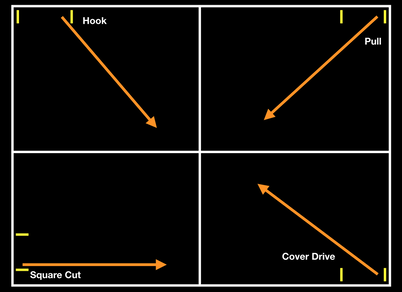Competence is an issue many in the game-centred learning (GCL) camp appear to want to side-step. There are advocates who will insist that non-linear pedagogical approaches in solely game approaches with novices will achieve that outcome however, for the vast majority of novices, that is an unlikely outcome. In their initial learning youngsters need to develop movement patterns that are stable enough for them to have the enjoyment and satisfaction that comes with having competency in relation to their intentions in games. They want the object to go there – and it does. They want to return the object and they can. They want to catch, throw etc. Achieving those outcomes sometimes requires organizing drill like activities within fundamental game skill categories (Slade, Martin & Watson, 2019; Smith, 2014). Once this level is attained enjoyment rather than fun emerges for the learner and at the age in question, that is a subtle but significant difference.
I responded to the Sport NZ initiative with the following article that was picked up and published in several newspapers in New Zealand and it was even linked to on the Sport NZ website under the moniker – “Thought provoking article”. So this is my blog response:
WHEN FUN IS NOT ENOUGH
Fun was the most frequently used term today at the launch of a new youth sport initiative from Sport NZ. Commentators from the major sports joining the promotion namely rugby, cricket, netball, football, hockey and basketball, all at one time or another said, in relation to playing sport, ‘Kids just want to have fun.’ The initiative from Sport NZ is designed to improve the retention of young people in sport and while other terms were bandied about having fun was pitched as the driver to improve retention of adolescents to play sport.
The problem is, if fun is the central focus as the means through which adolescents will be retained in playing sport, then unfortunately, it is not enough. While having fun is important, the real focus should be enjoyment. Enjoyment has a subtle but important difference to fun. Retention of adolescents in sport is, in the main, governed by competence. Competence is considered so important for retaining youth in sport it is given a name – The Competency Barrier. The pre-adolescence barrier is contextualized, as the extent to which a young person can exhibit a measure of control of the fundamental game or sport skills in which they are engaged. Without the necessary competence they are unlikely to continue with sports as adolescents or adults. It is commonsense. Few amongst us persevere in an activity in which we do not achieve a modicum of success. Yet, if we achieve some competence and some success we are more likely to enjoy doing the activity and likely to persevere with it. The retention is driven by feelings of self-efficacy through competence. We can have fun because we can do meaningful things in the sport or game.
While there is much to admire in this initiative from Sport NZ, fun is such a fleeting quality and in sport is only a short-term outcome it might not be the best focus to achieve the intended ends of playing retention. For example, fun in physical education (PE) circles is often described as “rolling out the ball” – a full class ‘fun’ game with little or no attempt to instruct anything or another term is “busy, happy good” – the class are busy, apparently happy and well behaved – but nothing being taught.
It is known how to teach coaches and teachers to instruct for competence in fun and enjoyable ways. Through integrated learning strategies it is also known how to capture the interest of those to play sport who feel sport, as it has been traditionally delivered, does not excite them. In my observations such holistic strategies are not pursued by the local tennis or football coach. In the main they want to develop a tennis player or footballer and beyond those albeit admirable goals, they typically do not have a wider educational agenda that is so important to capture those on the fringe of playing or carrying on with sport as adolescents or adults.
However, while it is known how to prepare teachers and coaches with the skills to teach or coach in that holistic way, it takes time. It will, therefore, be interesting to see if the Sport NZ initiative includes provisions to achieve those ends. Given that community coaching is undertaken by an army of volunteers to do so will be an expensive and intense exercise. It will take more than a booklet in a pack with a whistle and a sponsor’s voucher.
My fear though is, just as students quickly see through the fun ‘roll out the ball’ strategy in PE – get bored and eventually become disruptive, if we don’t ensure the coaches and teachers can deliver more than fun, increased retention by adolescents in sport may be problematic.
Slade, D.G., Martin, A.J., & Watson, G. (2019).Developing a game and learning-centred flexible teaching model for transforming play Physical Education and Sport Pedagogy, 24(5), 434-446, DOI: 10.1080/17408989.2019.1616684
Smith, W. (2014).Fundamental movement skills and fundamental games skills are complementary pairs and should be taught in complementary ways at all stages of skill development. Sport, Education and Society, 21(3), 431-442



